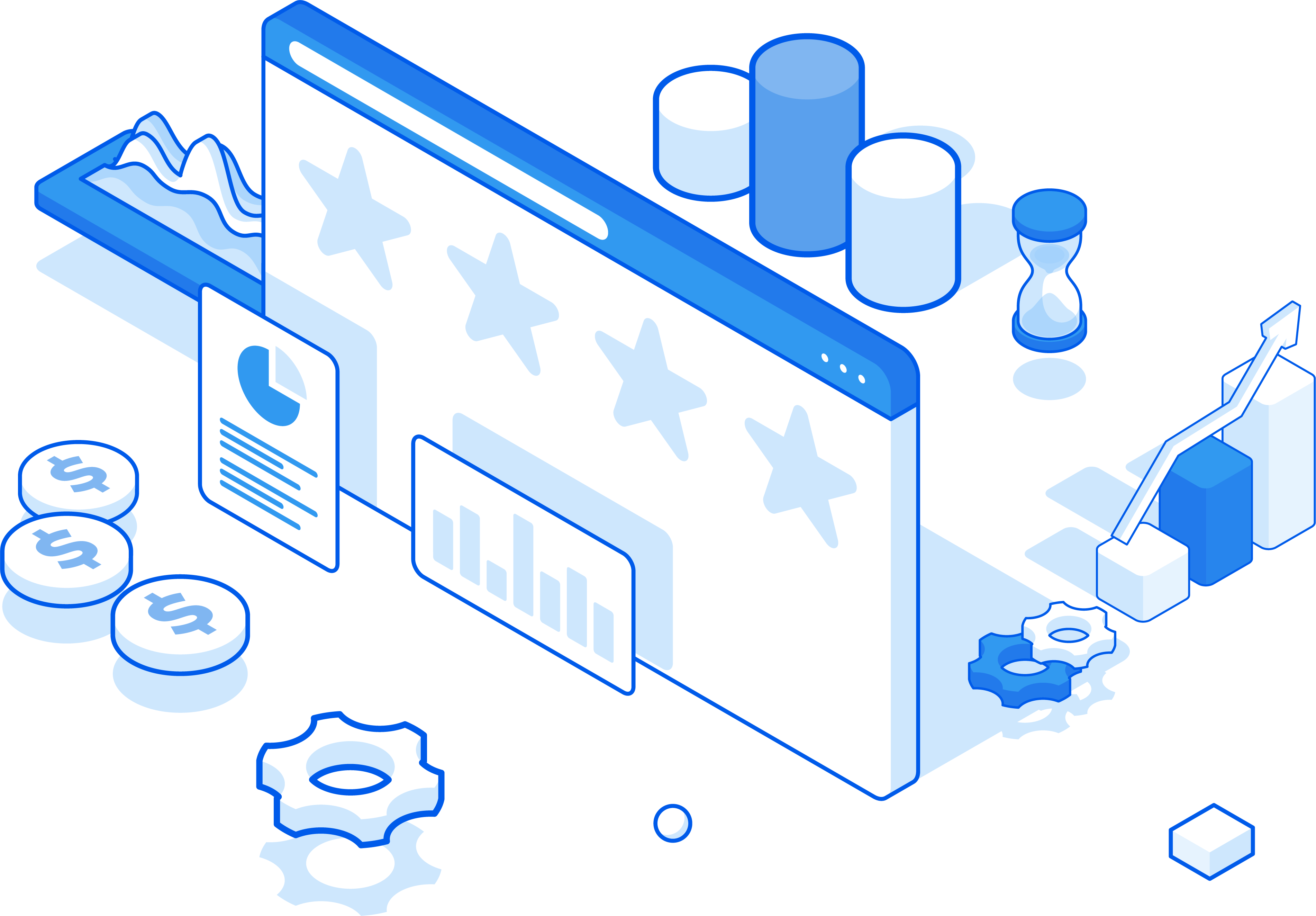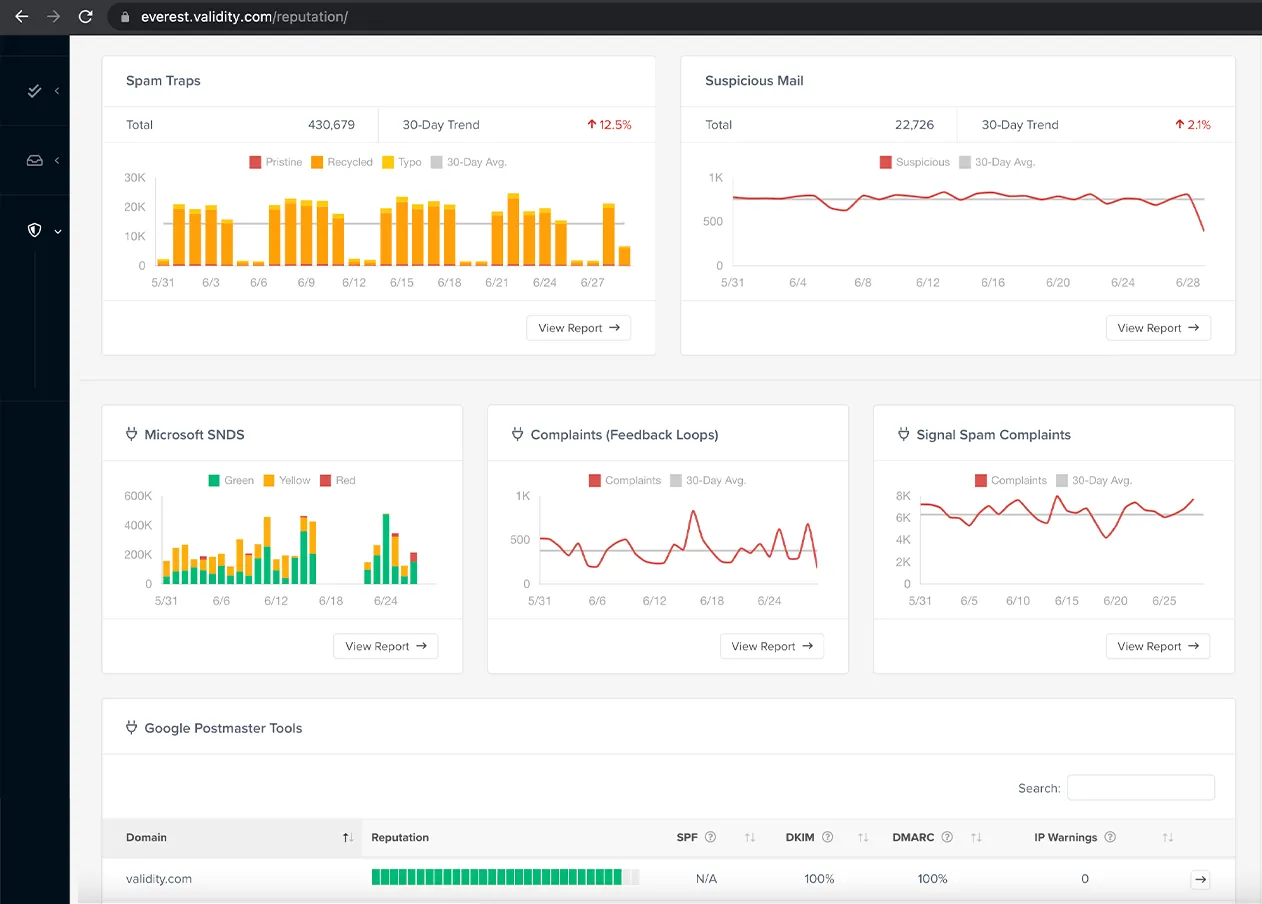Conversions
38:1
The email channel is consistently top ranked for its return on marketing investment with an average ROI of 38:1.
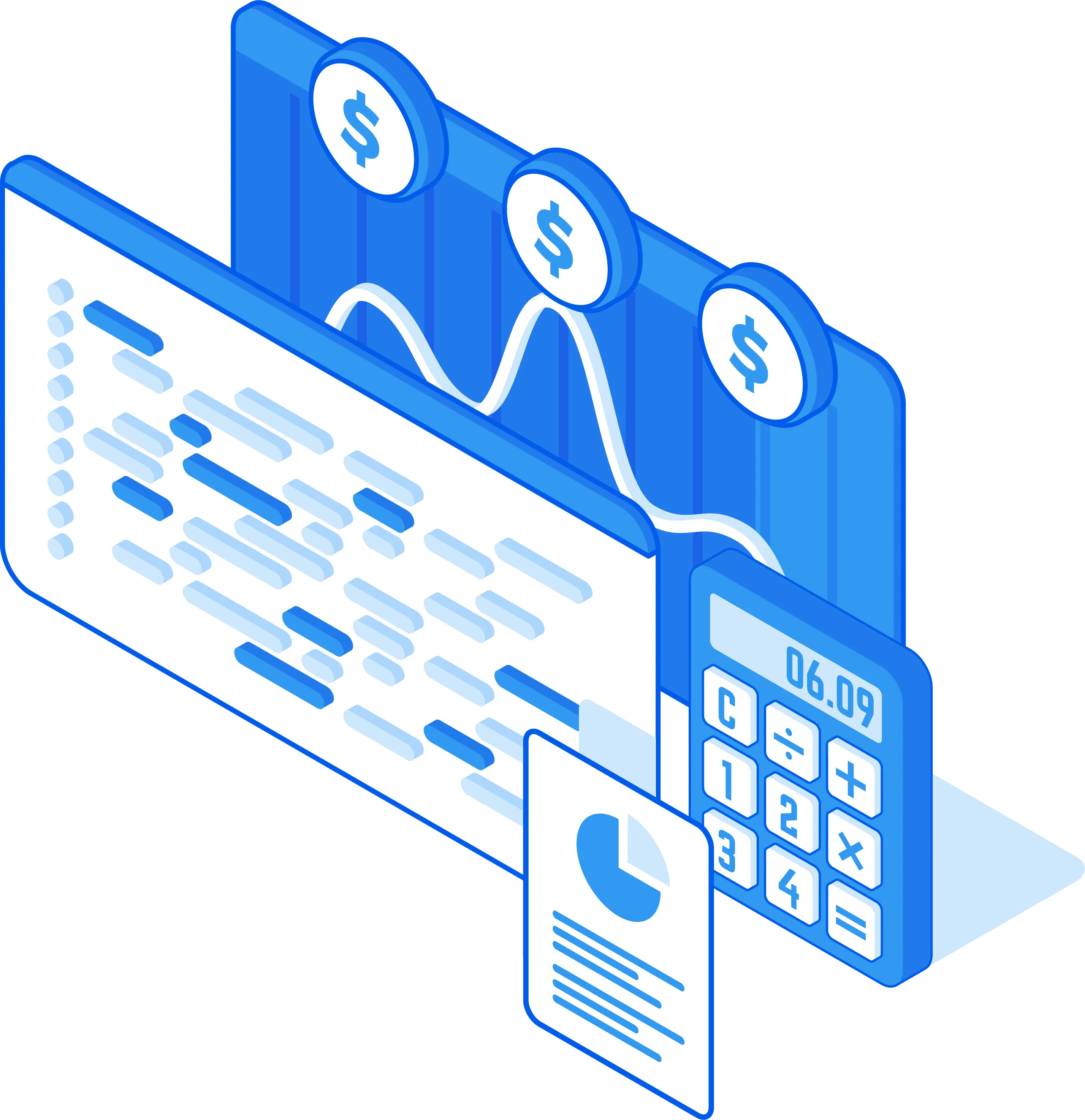
Brand awareness
Customer loyalty
Email can be used to build relationships with your customers. By using personalization throughout the customer lifecycle, you can strengthen your customers’ connection with your company. A simple birthday email, a VIP program, updates on what happens with their donations, or relevant articles based on their history are just a few examples of how you can use email to create customer loyalty by showing your subscribers they’re appreciated and important to your business.
How does email marketing work?
Email marketing has many layers, but the first step to getting started is choosing your Email Service Provider (ESP), or the technology you’ll use to create, manage, send, and analyze your email campaigns. You also need to know what mailbox providers (MBPs) look at to determine your email deliverability, such as authentication and reputation, and whether to be on a shared or dedicated IP.
Validity Everest complements your ESP providing crucial insights and deliverability guidance to help you generate more revenue from your email program.
Email Service Providers (ESPs)
Mailbox Providers (MBPs)
Mailbox providers such as Gmail, Hotmail, and AOL determine whether your message gets delivered. They check for proper authentication (SPF, DKIM, DMARC) to validate your domain and build your sender reputation. Your reputation also largely depends on your sending habits, such as sending to engaged email lists or inactive lists. Hitting too many spam traps can damage your reputation and land you in the spam folder instead of the inbox.
Shared and dedicated IPs
Shared IP: A shared IP pool is a group of senders using the same grouping of IP addresses to send email. Since you’re grouped together by your ESP, your reputation can rely in part on the sending practices of other companies. This can be beneficial if you’re a smaller business with a smaller sending volume that’s just building up your program. However, if you’re added to a poorly performing pool, it can negatively affect your deliverability. You can track how your delivery rates are doing and contact your ESP if you notice any sudden changes.
Dedicated IP: If your business is more established and has a larger sending volume, then it’s worth considering setting up a dedicated IP. You can more closely monitor your own IP addresses and know that your reputation is reliant only on your sending practices. If you select a dedicated IP address, you would need to go through an IP warmup period when starting out to make sure MBPs recognize your domain and IP.
Types of email campaigns
Newsletters
Email newsletters are used for keeping customers informed about new products or services, introducing new blog posts or articles, and staying top of mind in between promotions, holidays, or events. It’s important to set up a regular cadence and template for newsletters and identify the types of content areas you’d like to feature, such as blog posts, news and updates, or a social media/influencer spotlight. Make sure the information in the newsletter is valuable, timely, and interesting. Learn more about how to attract new customers with newsletters here. The anatomy of a newsletter can look something like this:
- Featured article
- Upcoming product teaser
- Product/service/employee spotlight
- Timely article (recycle seasonal blog posts)
- Social media spotlight
Marketing offers
Announcements
Event invitations
Automated campaigns
Welcome series
Cart abandonment
Post purchase
B2B sales outreach
How to create an email campaign
Define your email marketing goals
- Why: Why is this campaign needed, and why will it benefit your business
- Who: Which part of your audience are you trying to reach?
- What: Is there a specific product or service that you want to promote
- When: Does this fit in with your regular cadence, or is it a special campaign? Time the campaign so the audience isn’t receiving too many emails at once if they’re on multiple segments.
- How: How will it all come together, and which members of your team have a responsibility in this process?
Build your email list – and understand to whom you’re emailing
As you acquire your actively opted-in audience, take the time to understand who they are and what they want to receive from you. Utilize segmentation to send to the right portion of your audience. While building your email list, consider:
- Double Opt-In: Tell subscribers to look for a confirmation email to join the email list. This confirms their email address was correctly entered and causes them to immediately engage with your email, indicating to MBPs that they want to receive your campaigns.
- Welcome email or series: Send a welcome email or series to further introduce subscribers to your brand and thank them for subscribing. Many people opt in to newsletters hoping to get coupon codes, so this is a great time to offer one.
- Preference center: As part of the welcome email, you can direct subscribers to a preference center to get more data points about them to help personalize their campaigns.
Outline the email campaign sequence
Based on the goal of the campaign, identify which content sections you want to include and then organize them by priority. Create a template for your creative briefs to align strategy, content, and design. This is a great organizational tool and helps you quickly reference what was done in previous years as your program continues to grow. Elements of a creative brief can be:
- Category: Promotional, newsletter, event, holiday
- Audience: Which list, segment, or persona the campaign is targeted for
- Subject line and preheader text
- Content sections
- Hero image text
- Header
- Body
- CTA
- Images: Brief descriptions of what the image should look like, dimensions, and max file size
Choose the right ESP
- Integrations: Is it compatible with your website backend to set up tracking pixels (for cart abandonment or browse abandonment campaigns)? Do you need it to integrate with other third-party services?
- Templates: Does your team have the design and coding capabilities to build robust HTML templates, or do you prefer an established drag-and-drop editor with dynamic content options?
- Segmentation: Have an audience in mind, and make sure when going through a demo of the platform that it can be recreated. Check what types of data can be segmented based on your needs, such as geolocation, purchase history, age, preference center, and more.
- Workflow automations: Is their workflow intuitive? Does it have all the triggers, events, and actions that you need?
- List hygiene: How do they handle bounced emails? How do they suppress unsubscribed addresses? Is it a very manual process, or can managing the list have some automation? Are there any limitations in sending to your list size and audience?
- Growth: Can this platform grow with the goals you have set for your marketing program?
- Budget: There are tiers of capabilities between ESP options based on your budget. You should consider whether it makes sense to pick an ESP that charges based on list size or by monthly sends.
Craft copy that is suited for the audience
- Spend time on the subject lines
After deliverability, subject lines are a top factor in determining whether a subscriber opens your email. You can have the most beautiful email design ever, but if they aren’t enticed to open your email, then it won’t matter. A/B test your subject lines to see how your audience responds to emojis, personalization, punctuation, and tone.
- Include personalization elements and excellent imagery.
Personalize your copy when possible. Keeping it as simple as “Hi [firstname]! Here’s a new product we think you’ll love!” is a great start. Use descriptive or visual imagery to tell a story about the product/service and appeal to why the consumer should invest in it.
- Include calls-to-action where appropriate
Adding links to the copy is a straightforward way to fit more CTAs in the body of the email. Subscribers are used to looking for buttons, so those are still a top design element for click-through rates. Make sure they are relevant to the content, and clear about why the subscriber should click there.
Choose an engaging, responsive email design
- Choose design elements that fit your goals, such as:
- Inverted triangle
- Design usually starts with a horizontal image with intro text below and tapers down to the CTA button.
- Zigzag
- With elements in a “Z” pattern going down the email, the “zigzag” design highlights multiple segments of the email and encourages subscribers to read all the way through.
- Boxy
- Color blocking segments of the email visually divides the content into different sections, making it easy to scan through and find the topic most interesting to the subscriber.
- Overlay text
- Normally used in promotional emails marketing a specific product, this design style consists of a high-resolution graphic with sparse overlay text and a CTA button. This type of email is very design-focused and doesn’t need to have much more supporting content around it.
- Inverted triangle
- Ensure the email design is responsive
Check that the design is responsive and that stackable elements are stacking on mobile in the order that makes sense visually.
Test your emails and make sure they work on all devices
Run a design test in Everest to see how the design renders across multiple desktop clients and mobile devices. Sending tests only to your team might cause you to miss any rendering issues that your subscribers could encounter when opening your email.
Schedule your campaign for the right time
Monitor your in-flight campaigns
Inbox tests
Measure the results and iterate
- Open rate: The number of opens divided by the number of delivered emails, multiplied by 100. · Delivery rate: The number of emails delivered divided by the number of emails sent
- Click-through rate: The number of clicks your email receives divided by the number of opens
- Bounce rate: Percentage of emails that did not get delivered (could be separated into hard and soft bounces)
- Unsubscribe rate: The number of people who unsubscribed divided by the number of emails delivered
- Inbox placement rate: The number of emails that were delivered to the inbox divided by the total number of emails sent.
- Complaint rate: The rate at which subscribers report your messages as spam. It is calculated as the number of “report spam/junk” complaints out of emails sent.
Learn more about the metrics that are essential to measure the effectiveness of your email program.
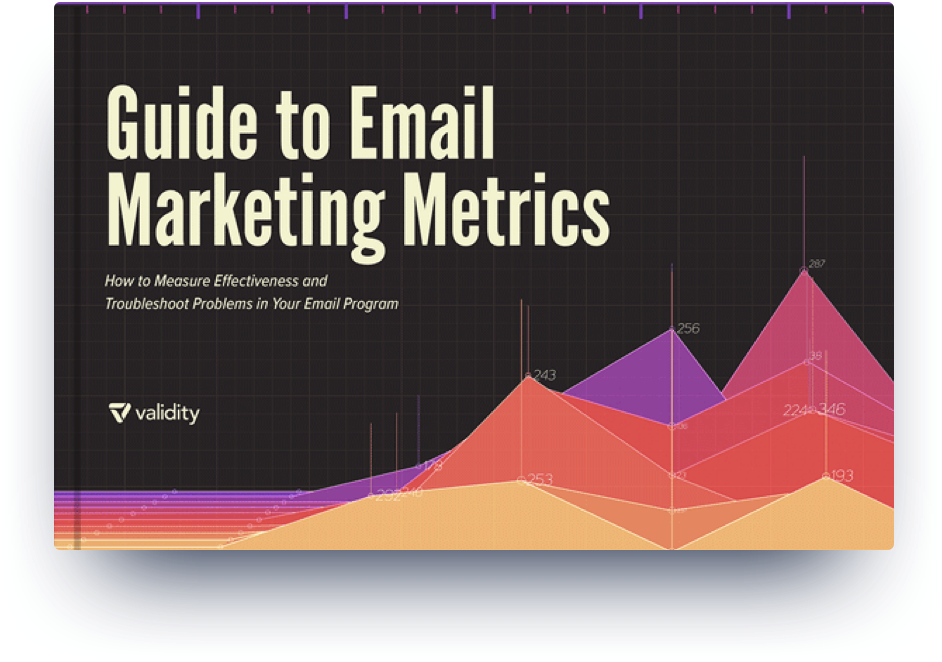
Other email marketing best practices
Buy an email list? Never
Opt-in best practices
Growing your email list organically is the best way to have an audience that wants to engage with your emails.
- Make it easy to opt in. Subscribers will not search through your website for a subscription box. Integrate it with your website design to find a space where it best fits.
- For transactional opt-in, have the checkbox unselected so prospective subscribers are taking the initiative to actively opt in.
- Include messaging on opt-in forms about what prospective subscribers can expect to receive. Make it clear they can opt out at any time and link to your privacy policy.
- Create a preference center landing page to give other digital platforms a place to direct customers to subscribe.
- Use a validation tool, such as BriteVerify, to validate a prospective subscriber’s email address once it has been entered into your sign-up form.
Email deliverability optimization
- Send to an active audience
- Avoid spam traps and disengaged subscribers by segmenting your audience and sending only to people who have been active within a specified time frame.
- Seed test your campaigns
- Use seed testing metrics to give you the data you need to see where your campaigns are landing once they’re delivered and identify any potential issues proactively. Learn about the do’s and don’ts of seed testing here.
- Authentication
- Set up SPF, DKIM, and DMARC to help protect your reputation and prove to MBPs that your domain is being used correctly. Learn more about the top three ways to avoid spoofing attacks here.
Clean email lists on a regular basis
Discover how Validity BriteVerify can help keep your email lists clean to protect your sender reputation.
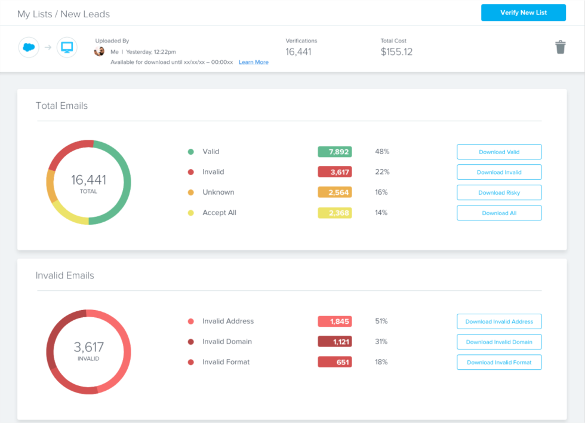
A/B test everything
A/B testing as many elements of your email as possible is the best way to make data-driven campaign decisions. Here are some key factors to test:
- Subject lines: Emojis, punctuation, tone, personalization, puns
- Call-to-action: Button colors, different phrases, location on the template
- Time of day: Morning, afternoon, evening, based on time zone, based on historical open times
- Day of the week: Spread a campaign out over seven days and see which days get the most responses, with each having the same subject line and content
- Design changes: If you want to do a redesign of your template, make a couple versions and test them out to see which layout gets better click-through rates
Schedule a free demonstration to see how Validity can improve your sender reputation so you get more messages to more people.
